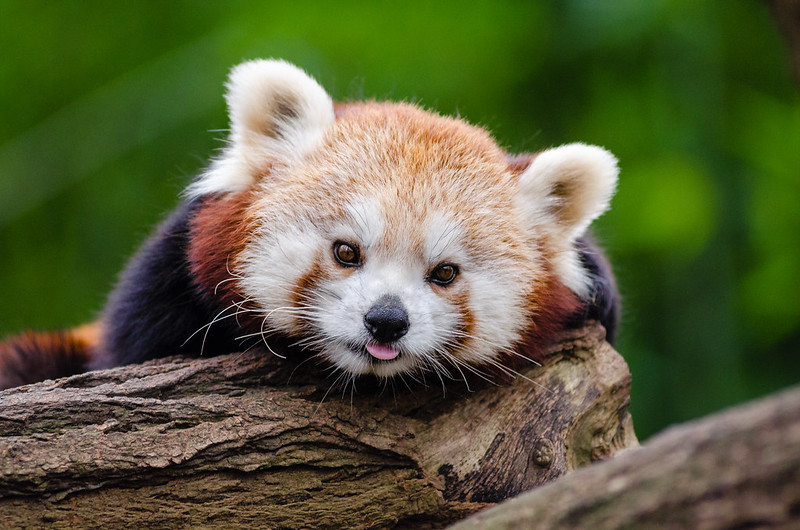Red Pandas: The amazing animal absolutely dependent on a small, fragile ecosystem at risk from human development
15 September 2018
Playful, cute, social and absolutely unique, the red panda is a marvel of the natural world, but we risk losing them before we even realise they are there.
The red panda lives in the mountains of Nepal and northern Myanmar, as well as in central China. The temperature in these regions is generally cool, and there is little annual variation. The southern slopes of the mountains trap the water from seasonal monsoons, supporting forests of firs, deciduous hardwoods and rhododendrons.
But it is beneath this initial canopy that islands of bamboo grow in these mountain forests. And it is this which provides the red panda with the bulk of its diet.
But bamboo groves are only found in narrow bands throughout the red panda’s range so although red pandas are distributed across thousands of miles of territory, they are restricted to these small, fragile ecosystems because of their dependence on bamboo.
Anyone who has ever seen a red panda will attest, they are one of the planet’s most strikingly beautiful animals. They are slightly larger than a domestic cat with a bear-like body and thick russet fur. Their belly and limbs are black, and they have white markings on the side of the head and above their small eyes.
Red pandas are very skilful, acrobatic animals. They spend most of their lives in trees and even sleep in the canopy. Their long, bushy tails provide balance and can even be used to cover themselves in winter like a little blanket.
Primarily an herbivore, the name panda is said to come from the Nepali word “ponya”, which means bamboo or plant-eating animal. While dependent on bamboo, unlike their larger relatives, they do eat some other foods as well such as fruit, acorns, roots and eggs. Like giant pandas, they have an extended wrist bone that functions almost like a thumb and greatly aids their grip.
Despite numbering just 2,500-10,000 individuals remaining in the wild, and inhabiting only a few scattered zones within their range, we already know much of how red pandas communicate with each other.
Perhaps because of the scattered nature of their communities, they have several ways of marking their territories and home ranges. These include urine, secretions from anal glands, and even scents from glands on the pads of their feet. They have also been known to use communal latrine sites to stake out territory and share information with others.
Body language has also been identified as a key method of communication with head-bobbing and tail-arching appearing to have significant meaning. A variety of vocalisations such as a threatening “huff-quack” and a warning whistle have been identified, while males are known to “twitter” to signal their reproductive intent to females.
While the red panda’s range is already scattered and fragile, it is becoming increasingly pressured by deforestation for logging and agriculture. Despite their protected status in Nepal, poaching is also a threat. This amazing animal, which many of us have never seen or heard of, remains very much at risk from human activity.
BACK






